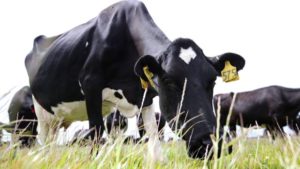Blog Categories
Blogroll
- Tony Jones on why your budget shouldn't matter…
- How UK Museums Use Mobile Tech to Enhance Visitor Experience
- David Brooks comments on the Experience Economy
- Excerpts from a paper by John A. Veverka
- Claire Ross outlines the digital age of visitor experiences
- What is the single most important aspect of the customer experience – Chris Bell
Naumai
If you’re are linked into tourism, in any form, you will be aware that there are a number of key issues facing the industry ahead of increasing visitor numbers. There have been many calls for increased funding for the sector, both at national and regional levels, to address infrastructure and conservation related issues arising from tourism.
Good summaries of the issue can be found here and here.
Currently international tourism remains New Zealand’s largest export earner and it was responsible for a fifth of earnings from all exports of goods and services. Tourism accounted for 5.6 per cent of gross domestic product (GDP) and directly employs 230,793 people or 8.4 percent of the workforce. Currently the Government receives $1.5b in GST from international visitors, with a further $1.8b collected from domestic visitors.
The tourism leaders report (2016) suggests a National Tourism Infrastructure Levy be created comprising of a 2% national bed levy across the accommodation sector and a $5 increase to the border levy which would raise $65 million per annum from the industry.
Treasury’s view on any new tax is not supportive suggesting “that (there is no evidence) a border or bed tax meets the burden of proof for departing from BBLR (broad-base low-rate) principles”.
The latest in a myriad of comments on the tax issue come from Minister of Tourism, Kelvin Davis, who while at TRENZ, was forthright in saying the future is in a “levy on international visitors”.
Of course whichever side of the debate you support, the issue becomes more complex with TLA’s pushing and in some cases implementing “bed” tax. Currently Auckland, Wellington, Queenstown , Dunedin and Hawkes Bay are all pushing for, discussing, or in Auckland’s case legislating for, such a tax.
At the time of writing Rakiura/Stewart Island is the only destination to use a similar mechanism (visitor levy fee) although other entities such as Milford Sound Development Authority include a levy in all passenger cruise fees.
The key ingredient missing in the discussion is the major risk of an uncoordinated approach to fixing both infrastructure and conservation based issues. We have previously discussed the risks to tourism of uncoordinated approaches to sustainability and a social license to operate.
One thing a visitor (international or domestic) does not need is an arrival levy/tax and then varying provincial “bed” taxes – none of which are either consistent, efficient to administer or designed to solve the myriad of different issues specific to different places that make up New Zealand/Aotearoa.
Ka kite ano
